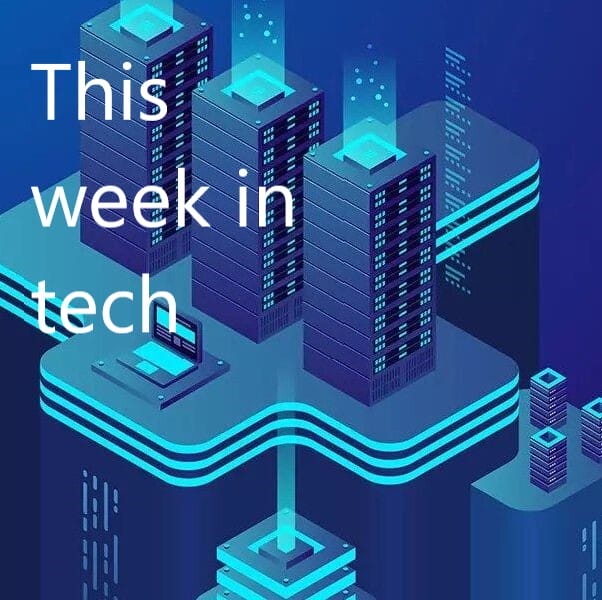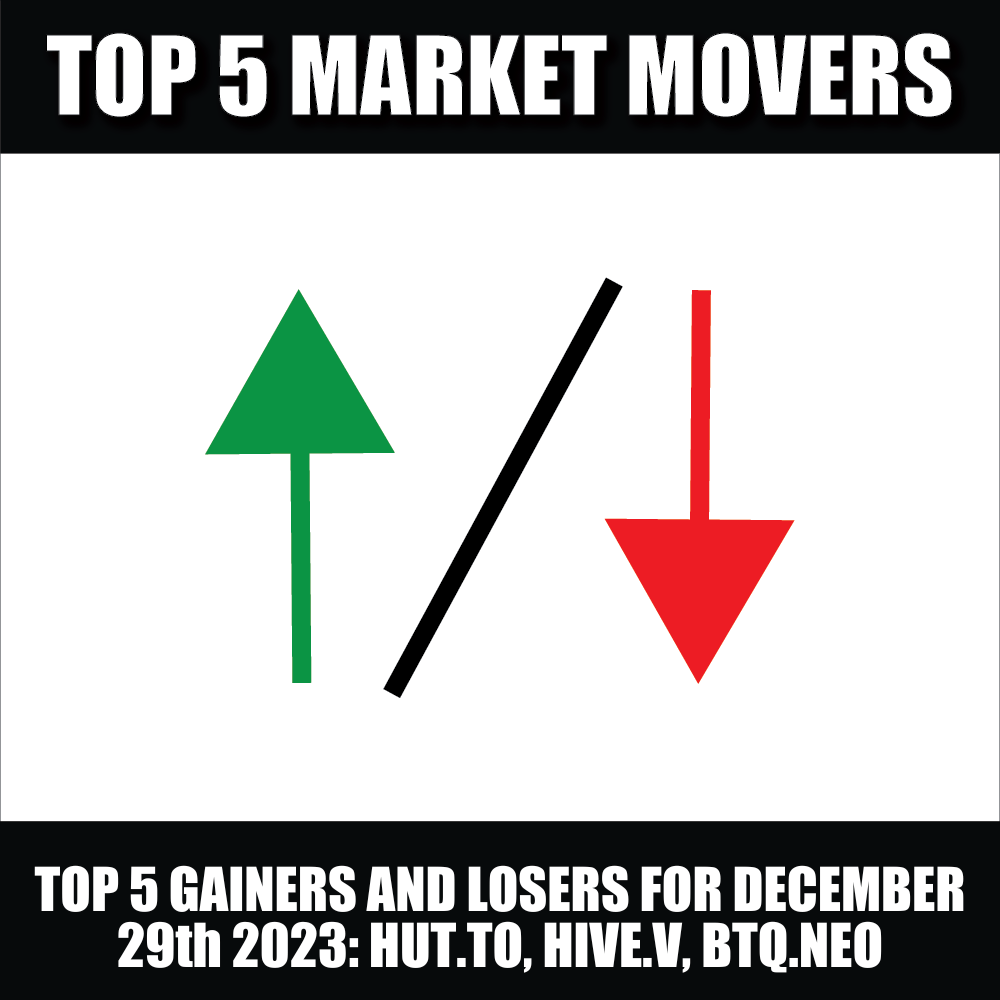“The future is already here – it’s just not very evenly distributed.“
One of my favourite William Gibson quotes, even if it is yanked out of context.
This week we’ll determine how true it is.
Reliq Health Technologies Knows How to Scale With Style
If we’re going to talk about the future, we need to talk about the pandemic because it’s going to be with us for the foreseeable future.
The best possible outcome is to reduce its hold on us, and get it (and our bodies) to the point where we think of it like a seasonal flu or common cold. Until then, our distributed future is going to need more in-home options for immunocompromised folks, and while we’ve seen the rise of basic telehealth where a doctor can port himself directly to your screen, we’re going to need more advanced tech than that if we’re going to make sure this thing we’re all going through doesn’t take too much of a toll.
Enter services like those offered by Reliq Health Technologies (RHT.V), which anticipates that their latest implementation plan agreements with clients will add another 10,000 new patients to their platform this year.
They’re into remote therapeutic monitoring, which gives clinicians the ability to probe in-home treatment with monitoring for patients with musculoskeletal and respiratory conditions. It involves having patients use medical devices to collect non-physiological data like therapy and medication adherence and responses. It gives patients the ability to self-report metrics like their pain level, mobility, nighttime waking due to breathing issues and other specifics.
And more revenue streams.
“The new RTM codes have increased the eligible patient population for our primary care clients by over 50 per cent and allow orthopedic and respiratory specialists to use Reliq’s iUGO Care platform to improve patient care and generate new revenue streams for their specialty practices. The new RTM codes have increased Reliq’s target patient population by over 20 million eligible patients,” said Dr Lisa Crossley, CEO of Reliq Health Technologies.
The new RTM codes represent an increase of over 20 million eligible patients and the company anticipates onboard to commence later on this month. The number they’re looking at is a minimum of 10,000 new RTM patients this year with an average revenue of $40 per patient per month.
Not bad.
Hive Show It Has The Moves
Distributed ledger tech like Bitcoin and Ethereum are probably here to stay.
Hive Blockchain Technologies (HIVE.V) dropped their financials earlier this week and they demonstrate what we’ve been saying all along. In this case, that Hive has somehow managed to find a way to continue to generate profits despite cryptocurrency’s presently ailing fortunes.
They pulled in $68.2 million, which is a boost of 30% compared to the last quarter and 297% since the same quarter last year. You’ll remember last year when Bitcoin was ascendant and all-time highs were a few months away. Now Bitcoin’s been on the decline, having nearly erased all of its gains since this time last year, and Hive has still managed to find a way to pull in some serious revenue.
Here’s the Q3 closing stats as of Dec. 31, 2021:
- Generated revenue from digital currency mining of $68.2-million, with a gross mining margin (1) of $61.7-million;
- Mined 697 bitcoin and over 7,126 ethereum during the three-month period ended Dec. 31, 2021;
- Earned net income of $64.2-million for the period;
- Working capital increased by $141.2-million during the three-month period ended Dec. 31, 2021;
- Digital currency assets of $168.1-million as at Dec. 31, 2021.
Net income reached $64.2 million, up 7% from last quarter and up 273% since last year.
It’s probably because they don’t just mine Bitcoin. They mine a mix of Bitcoin and Ethereum, and their combined liquid BTC and ETH have a gross value of $168 million, which is up 11 times from $15 million a year ago (ending December 31, 2020). The actual numbers of BTC and ETH are 1,813 BTC worth $83.1 million and 23,290 ETH worth $84.9 million respectively.
“A year ago, we made the conscious decision not to sell our mined cryptocurrency or undertake an expensive financing when brokers were offering capital at 20-per-cent discounts or encouraging us to borrow against our BTC and ETH assets at a 12-per-cent cost of capital in the scramble by crypto mining companies to purchase more ASIC chips. Hive’s modest equity fundings were done at prevailing market prices or premiums to the stock price, and this has helped us generate the highest robust returns on invested capital relative to our peers,” said Darcy Daubaras, Hive’s CFO.
Bitfarms Hunts For Acquisitions in the Face of Consolidation
Bitfarms (BITF.V) has ten farms in various stages of operation and development with a total capacity of 404 megawatts and 48,000 miners to be added in 2022. The company believes they’re well on their way to reaching their target of three exahash by March 31, 2022 with an end-goal of eight exahashes by the end of the year.
That’s a fairly tall order but one they could fulfill if they meet their benchmarks.
“We’ve been actively looking at opportunities to buy companies and assets going back to last December. We only closed one of those transactions, and that was Washington for 24 megawatts. In terms of size, we wouldn’t be interested in looking at anything less than 10 to 20 megawatts of size, because that’s about the size that makes sense to make it worthwhile for us. We certainly are more attracted to the bigger opportunities where there’s scale. Because of our team and our expertise deploying new facilities, I think we’re an attractive partner for anybody that wants to come to us, particularly given our growing international expertise,” according to Emiliano Grodzki, CEO.
According to Grodzki, what they’re finding right now is companies with excellent electricity deals but older miners, which they can’t upgrade due to a general lack of access to capital. What they’re hoping for is a private or public deal where there’s a solid electricity contract, a team that can chew bubblegum and walk at the same time, and a decent layout with quality miners.
If they manage to find a deal or two like that then they’ll stand a chance of making the 5 exahash jump by the end of the year. It should be interesting to watch for the next ten months how this pans out.
NuRan Wireless Squares Off Against The Digital Divide
If you listen to the news you get the idea of Africa as being the home of disease and poverty. You get the patronizing white asshole in the dusty jacket with his perfectly trimmed beard entreating you to open your pocket book and shell out cash to help the kids over there, each of whom is covered in flies and dying of malnutrition.
Except the stats don’t bear out. Public intellectual Stephen Pinker wrote a book detailing that things are actually getting better across the board—not just over there, but everywhere. But over there especially. Nobody goes hungry in Africa anymore unless it’s for religious reasons, courtesy of globalization, technological advances and the like.
Despite what the confluence of messaging may suggest, the world is getting better and we have reasons to be optimistic for our distributed future. There is, however, still a lot of work to do. We’re not there yet and the Digital Divide is one of the largest factors keeping people from impoverished regions back.
If you’re unfamiliar with NuRAN Wireless (NUR.C)—they’re a telecommunications company trying to bring wireless network coverage to remote and rural regions around the globe. This isn’t exactly your uncle’s farm far enough away from the city to make your WiFi spotty and where you have to use bunny ears to get the local access channels—this is remote African villages in countries like Cameroon and the Democratic Republic of Congo (DRC).
Places where the Zika virus and the prospect of armed rebellion are concerns.
Still they’re managing to do the work to close the digital divide.
They’ve deployed to 41 sites in Cameroon and served 197,254 people with a penetration rate of 49.4% including on average connecting 88,000 users connected through the NuRAN network. This is over the company’s initial budgeted projects, which were based on a 24% penetration rate. Over 40% of the sites are already bringing in more revenue than the previously announced minimum monthly fee paid, which was on average USD$962 per site.
And here’s how they’re doing in the DRC:
- Total sites deployed – 12.
- Total population covered, approximately 61, 673 inhabitants.
- The rest of the data points are not available at this early stage. NuRAN will provide further information as it becomes available.
BIGG Digital Assets gets contract extension
My grandmother worked for the government for the better part of four decades and one of the more common criticisms I’ve heard levied (never by her) was that government work would never make you rich.
It’s true. It won’t. But you won’t ever starve taking contracts from the government.
Bigg Digital Assets (BIGG.C) is well aware of that fact. Government work is stable work and stable revenue, while you reach out for greener pastures. It’s a reliable foundation from which you can build a launchpad to riches.
Bigg has received a contract extension for third year of a five year contract with a United States federal government agency, bringing their total contract value to $588,462. They can’t mention which agency for legit national security reasons, and I can respect that.
“Entering our third year demonstrates product-market fit and public sector agencies demand for premium crypto investigation technology,” says Lance Morginn, president, Blockchain Intelligence Group. “This lasting partnership is a clear validation of all the hard work and advances in technology our team has made to date.”
Also, in the past two months Blockchain Intelligence Group inked contracts with two U.S. banks with contract amounts of $96,500.
Reading all of this as I have over the past few months, you really get the idea that this style of law enforcement is going to be a big deal in the future.
If you’re curious what the hubbub is all about—it’s about QLUE (Qualitative Law Enforcement Unified Edge) which gives law enforcement, regulators and government agencies the goods needed to follow transfers on whatever distributed blockchain they’re serving.
It uses artificial intelligence and search and data analytic algorithms to detect suspicious activity from crypto transactions. That way, investigators can zero in on anything suspicious from terrorism financing, human trafficking, corruption, bribery, you name it, and tag a name to an address—which they then hand off to investigators to go break down the down and get the badguys.
How cool is that?
Hello Pal seeks to diversify their EU crypto holdings with collaboration
Hello Pal’s (HP.C) latest non-binding letter of intent with UniCrypto Group AG is to collaborate on providing cryptocurrency services to users of HP’s mobile apps. UniCrypt is based in Switzerland and is one of Europe’s biggest non-custodial wallet providers, offering wallet and crypto-based remittance services to over 14 million customers globally.
The services offered include non-custodial digital wallets that are completely compliant with the present spate of anti-money laundering statues presently floating around in the EU, as well as the ability for users to trade crypto and transfer their digital assets over UniCrypto’s platform.
“We are tremendously excited at the prospects which this collaboration will bring to our efforts in increasing cryptocurrency usage among not only Hello Pal users, but to the world at large. With UniCrypt’s ability to easily onboard new users and generate segregated wallets, we aim to provide many users across the world with their first cryptocurrency experience and introduce them to an international social community with a borderless payments system,” said K.L. Wong, chairman of Hello Pal.
Jaguar Land Rover Announces Partnership With NVIDIA
I don’t know about you but the prospect of cars driven by artificial intelligence doesn’t fill me with an incredible amount of confidence. Maybe it’s that AI, at least in the iteration we know it now, lacks the necessary sophistication to make the flexible moral judgments we’d necessarily expect of a flesh and blood driver. Maybe it’s because my computer freezes at the most inopportune time, and at least right now all it means is I have to go back to a backup for my article. If a computer in a car freezes while on the highway, there won’t be a system restore option to put my parts back where they were yesterday.
But NVIDIA (NVDA.Q) and Jaguar Land Rover want us to believe in the future. They’re also trying to work on the distributed future thing I’ve been going on about by presenting us with genuine future-tech and putting a timeline and a pricetag on it.
They’ve got my attention and as far as I’m concerned, this multi-year strategic partnership has one thing going for it: Elon Musk and Tesla are nowhere around.
They’re suggesting the Jaguar and Land Rover will be built on the NVIDIA DRIVE software platform, which apparently includes active safety, automated driving and parking systems and well as driver assistance. Inside the vehicle, there’s AI features, including driver and occupant monitoring and probably those little screens that let you watch yourself and beep at you while you back up into the curb.
The due date for this is supposedly 2025, which really given that AI is little more than a super-advanced calculator right now in 2022, seems like a tall order.
One thing is for certain, though. Figuring that every new technology has bugs to iron out, I wouldn’t want to be one of the folks tapped to be the proverbial guinea pig for a test drive. Hard pass.
—Joseph Morton







